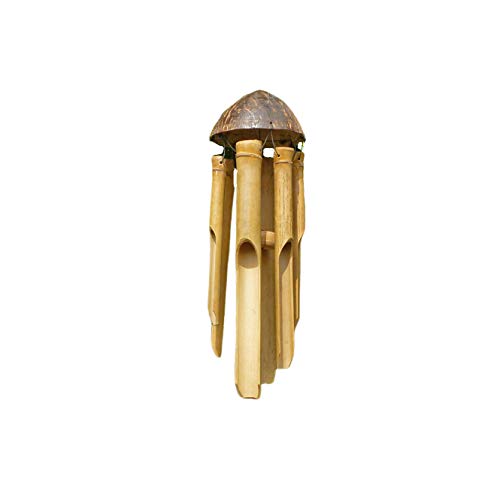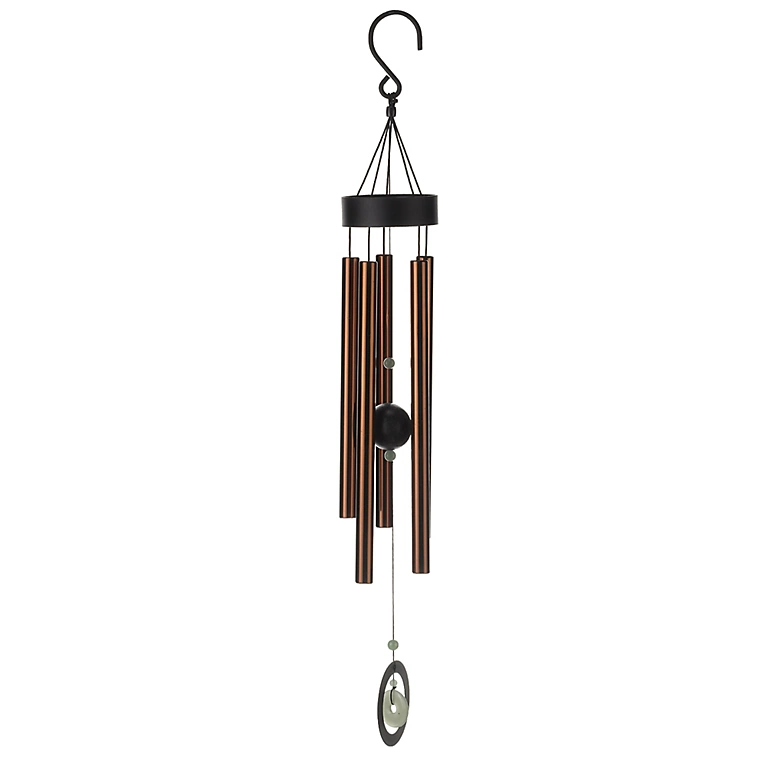Zen garden ideas – 24 ways to transform your outdoor space into a Japanese-inspired sanctuary for relaxation
Turn your garden into a haven for relaxation with these zen garden ideas

If you're keen to transform your garden into a zone for contemplation, relaxation and simplicity, you'll love zen garden ideas.
A popular variety of Japanese garden ideas, zen gardens incorporate the best gravel garden ideas, planting techniques and soothing features to create a minimalist area dedicated to peace and quiet.
'Creating a zen garden is all about crafting a space that is tranquil, balanced and provides a deep connection to nature,' says Reilly Gray, co-founder of Suns Lifestyle. 'They are becoming more and more popular as homeowners look to create gardens which are relaxing havens.'
We've gathered our favourite zen garden ideas to help you transform your space into a soothing sanctuary.
Zen garden ideas
As the landscaping and plants involved in zen garden ideas are typically low-maintenance, they make great easy garden ideas if you're looking to refresh your outdoor space.
‘Japanese zen gardens are a minimalistic visual retreat that anyone can create in their outdoor space, no matter the size,' says Marcus Eyles, horticultural director at Dobbies.
'Building your own is easy to do, as less is more with this look. Choose calming, fresh greenery and avoid overcrowding the area or using bright colours. Border your zen area with natural elements like rocks and pebbles to get the clean organic lines which zen gardens are known for.'
Sign up to our newsletter for style inspiration, real homes, project and garden advice and shopping know-how
In fact, zen garden ideas make particularly good grassless garden ideas due to the emphasis on gravel, planters and curved pathways.
If you're looking for Japanese garden ideas and zen garden ideas, here are our favourites.
1. Recreate a moss garden effect

Moss is a huge part of Japanese garden ideas, and it often features in zen gardens. It can cover rocks, walls or the ground to create a beautiful sea of green, and it symbolises simplicity among other concepts central to zen garden ideas.
Although moss gardens can be a little difficult to create, you can achieve the same effect with some clever planting. 'To get the look, you can use mind-your-own-business, the little green spreading ground cover plant,' says garden designer Harriet Worsley. 'It likes shade, and works well planted around paving stones. It can be quite a brute, though, and once it’s happy, it may eclipse other plants.'
You can buy Soleirolia soleirolii plants from Crocus, or opt for a similar look with Scleranthus Biflorus, or Irish moss, from Gardening Express.
2. Add evergreen plants and trees
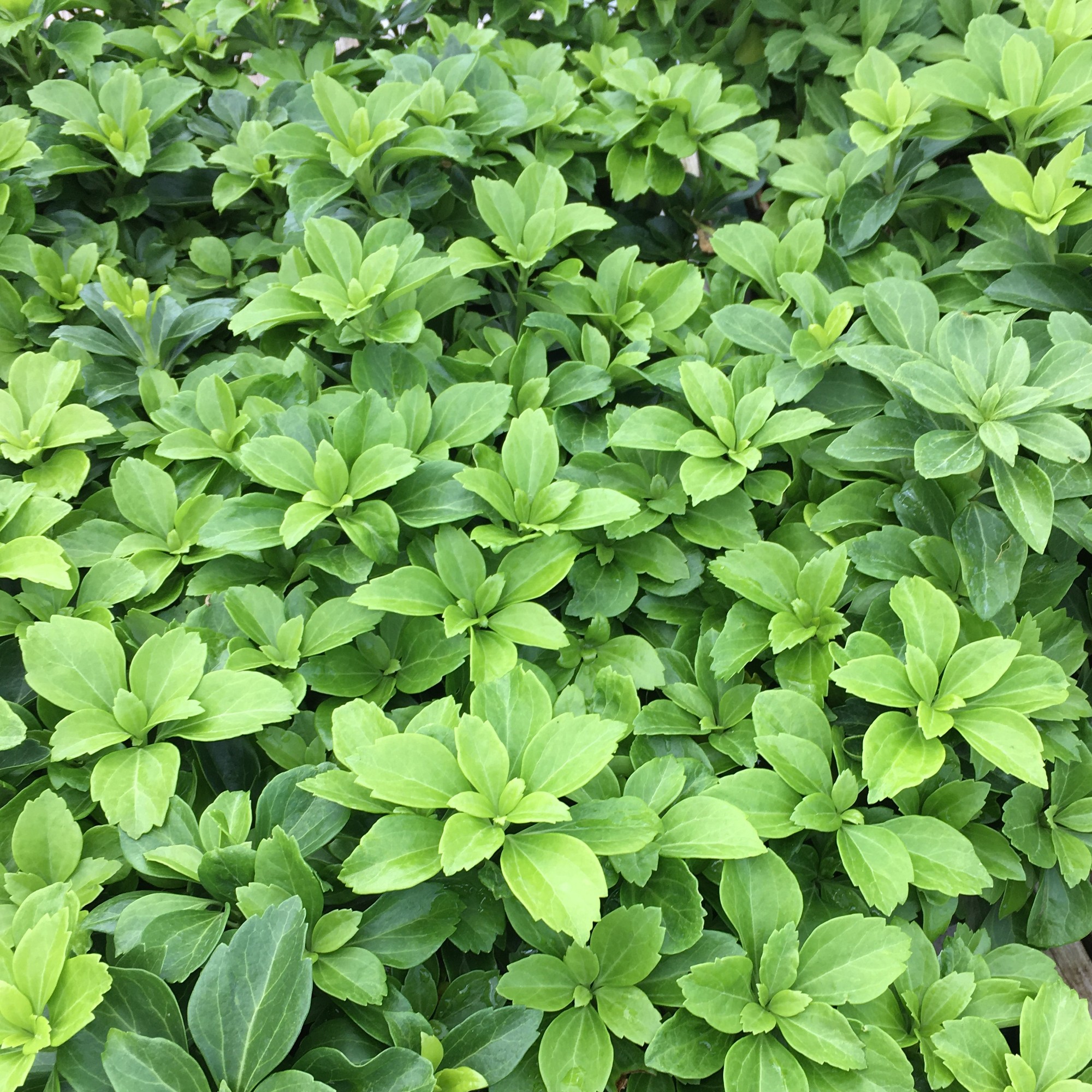
To keep your zen garden ideas green all year round, incorporate evergreen shrubs and trees into your planting. There are plenty of low-growing evergreen shrubs and trees to choose from.
'Planting is perhaps the most vital part of a zen garden, so focus on simplicity and repetition,' says Reilly from Suns Lifestyle.
Garden designer Harriet Worsley is a strong advocate of evergreen planting as part of Japanese garden ideas. 'A zen garden needs to be calm, and in my opinion, a sea of textural green foliage is one of the best ways to achieve this – like gazing out over the ocean and just seeing unbroken blue,' Harriet says. 'It relaxes the mind. Flowers are less important in these spaces, but texture and form are everything.
'Pachysandra terminalis is wonderful for mass planting. It’s evergreen and looks good surrounding large domes of Taxus (yew), but again, watch out, because it can take over.'

Reilly Gray is co-founder of British, independent, family-run outdoor living specialists, Suns Lifestyle. Specialising in high-quality luxury outdoor structures, furniture and accessories, Suns Lifestyle's collections have been designed for a full life outdoors, all-year-round.
3. Feature a cherry blossom tree
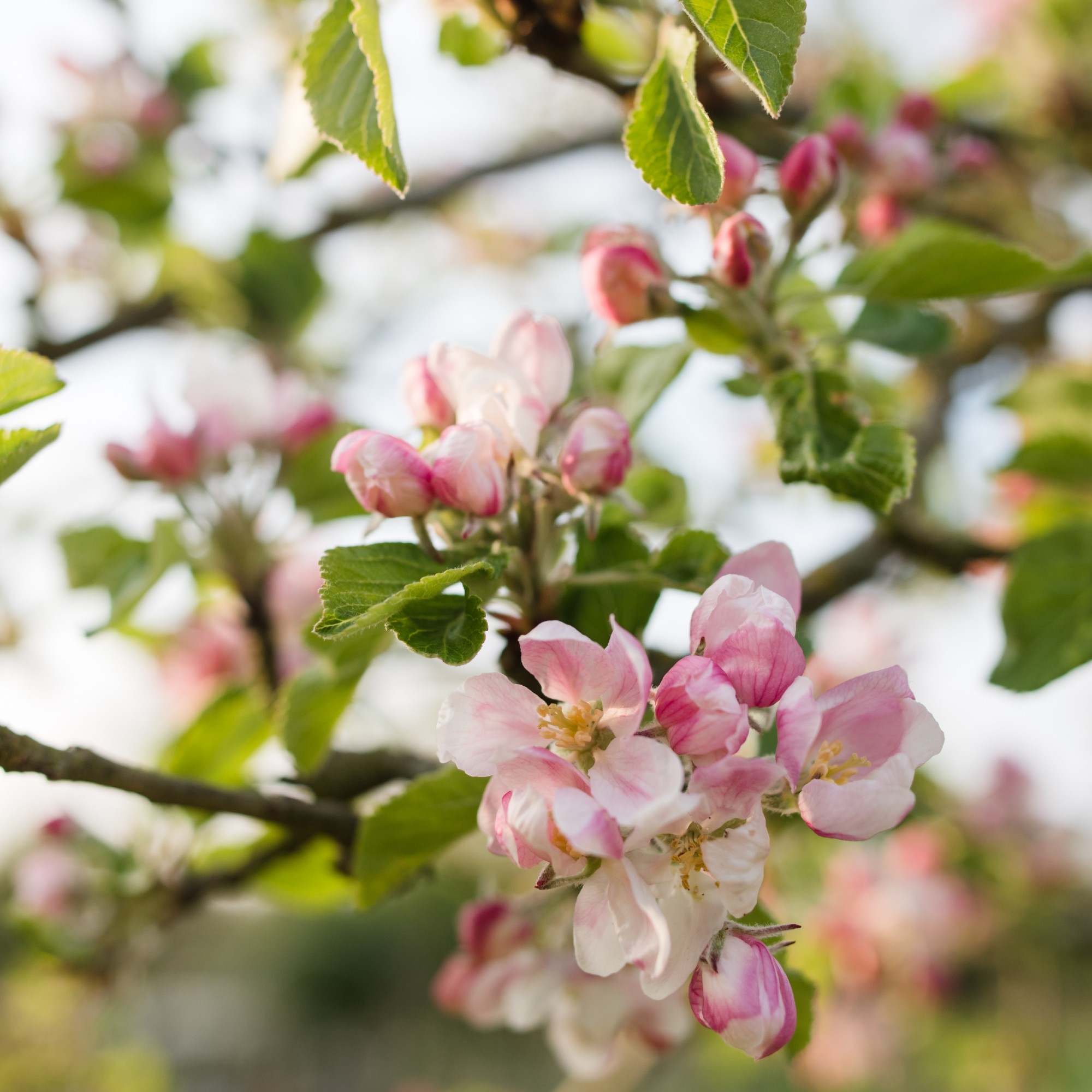
Cherry blossom is Japan's national flower, and the trees make beautiful focal points in the garden when they're in bloom during the spring.
'My favourite cherry tree for a zen garden is the Prunus serrula with its smooth burgundy bark,' says Harriet. 'In some public gardens, they polish it to make it shine. For the blossom, I like cherry trees that groan and bend with white flowers, like branches overladen with snow. Prunus ‘Taihaku’ is one of the best.'

Garden designer Harriet Worsley set up Worsley Design & Consultancy after studying garden design and planting design and studying for her RHS Certificate of Horticulture. She has designed everything from small London roof terraces to large country gardens.
4. Add red hues with acers
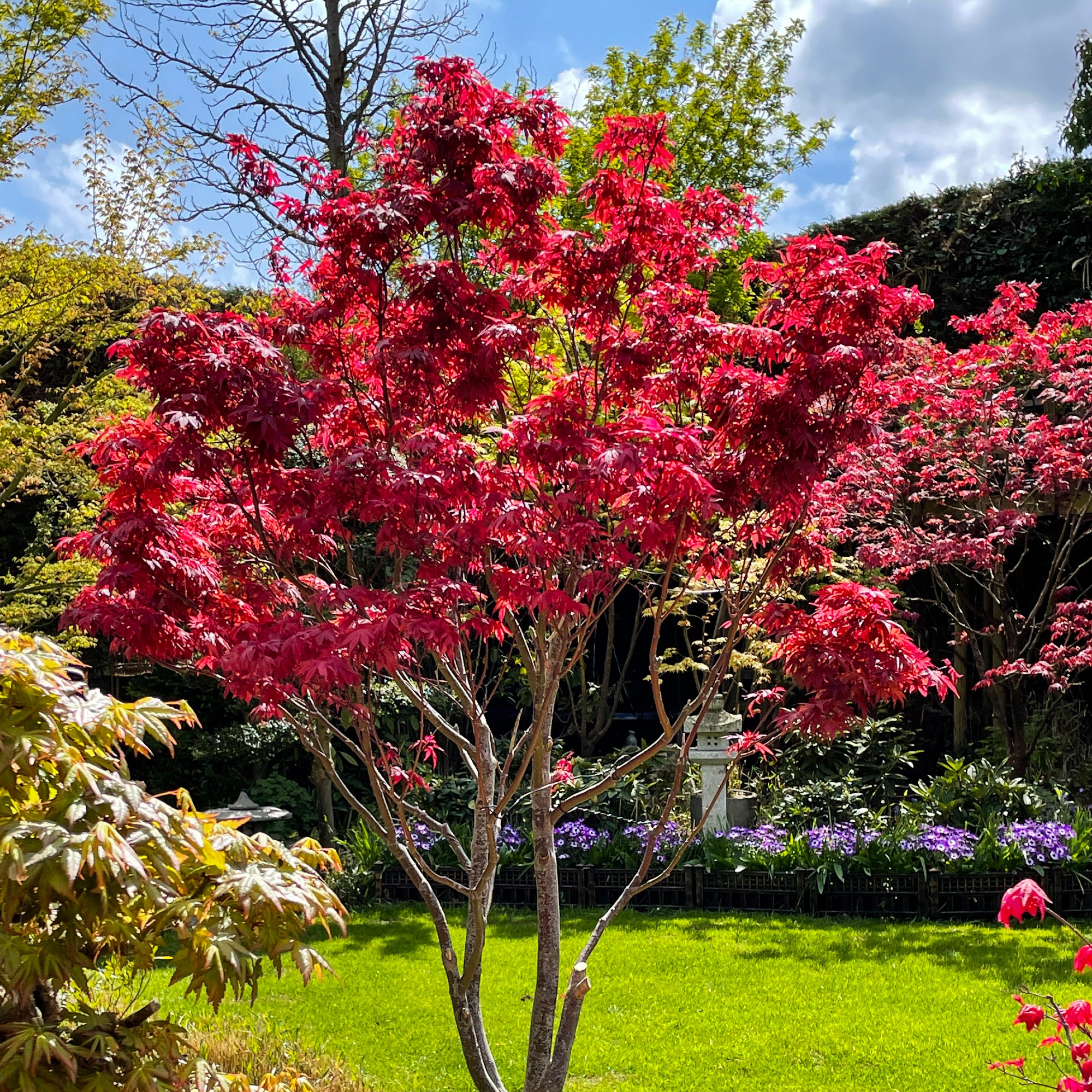
If you'd rather bring red hues into the garden, Japanese maples, also known as acers, are a fabulous way to create visual interest. Their elegant silhouette and ruffled texture will add charm to your outdoor space and offer intense colour with intricate foliage that changes tone throughout the year.
'Acers are an obvious choice for a Japanese-inspired garden – the hedonistic blaze of red and orange foliage in autumn creates interest and surprise, just as the light and sun of summer is fading,' says Harriet. 'My favourite at the moment is Acer palmatum ‘Sango-kaku’ as it also has dynamic red bark – great for winter interest.
'I always try to bring red details into Japanese garden ideas – using acers, or perhaps just some red pots. In the past, we’ve installed a beautiful curved red bench at the end of a garden as a focal point. As red and green are complimentary colours, red elements seen against green makes a garden almost fizz and glow in the sunlight.'
5. Create a soundscape
The best zen garden ideas engage all of the senses - so once you've worked out how you want your space to look, think about how you can create a relaxing atmosphere with sounds.
'Wind chimes are a great and affordable way to add another calming element to your garden,' says Jamie Jones, outdoor living expert at Open Space Concepts. 'Many people believe they repel negative energy and omit bad luck from homes. Whether you believe in the spiritual side of them or not, there’s no denying their soft sounds can be incredibly soothing.'
A trickling fountain or similar water feature ideas are also tranquil options - but more on that later.
6. Add a koi pond

Garden pond ideas are among the most tranquil features you can add to a zen garden, and including koi can be a wonderful way to keep in touch with nature.
'A koi pond will add interest to your zen garden and is visually appealing, not to mention the beauty of koi fish,' says Jamie from Open Space Concepts. 'It's also beneficial for biodiversity in your garden and can help attract other wildlife including birds and frogs. Plus, the stress reduction and relaxation a pond can bring is really valuable.'
7. Add a stepping stone path
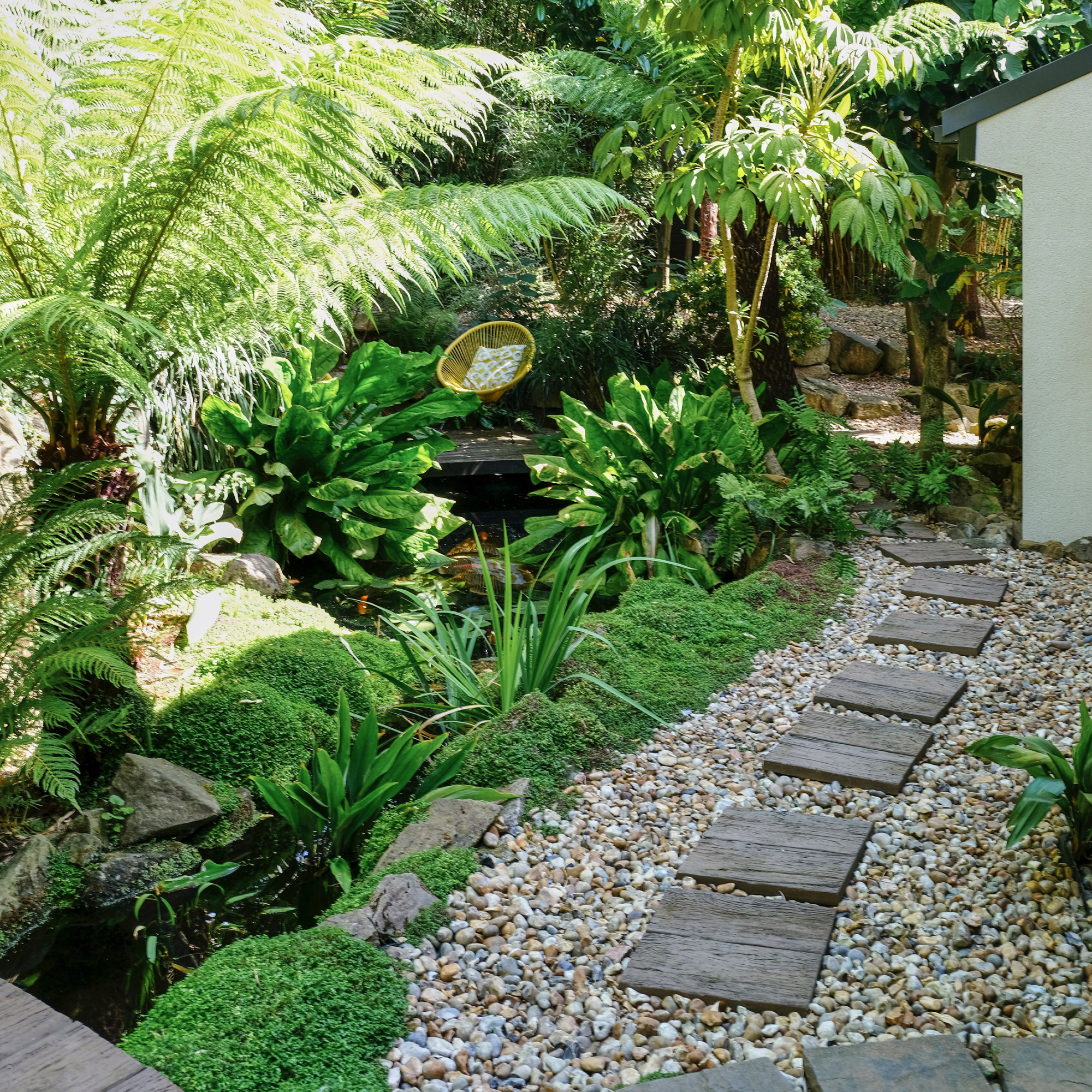
A lot of gardens will have a path that runs from the lawn to the shed, back of the house or side gate. This is the perfect opportunity to experiment with garden path ideas that are not only useful but can also encourage mindfulness. Using stepping stones requires you to walk around your garden more slowly and focus more on every step, immersing yourself in nature.
‘A path does not always have to be purely useful,' says Harry Bodell, gardening expert at Price Your Job. 'They can also promote mindfulness when woven around a small tree, a statue, or water. The effect is enhanced when we incorporate some of our favourite stepping stone concepts because each step requires concentration, naturally slowing the pace. Keep the lines bent and choose natural stone.'
8. Include an archway
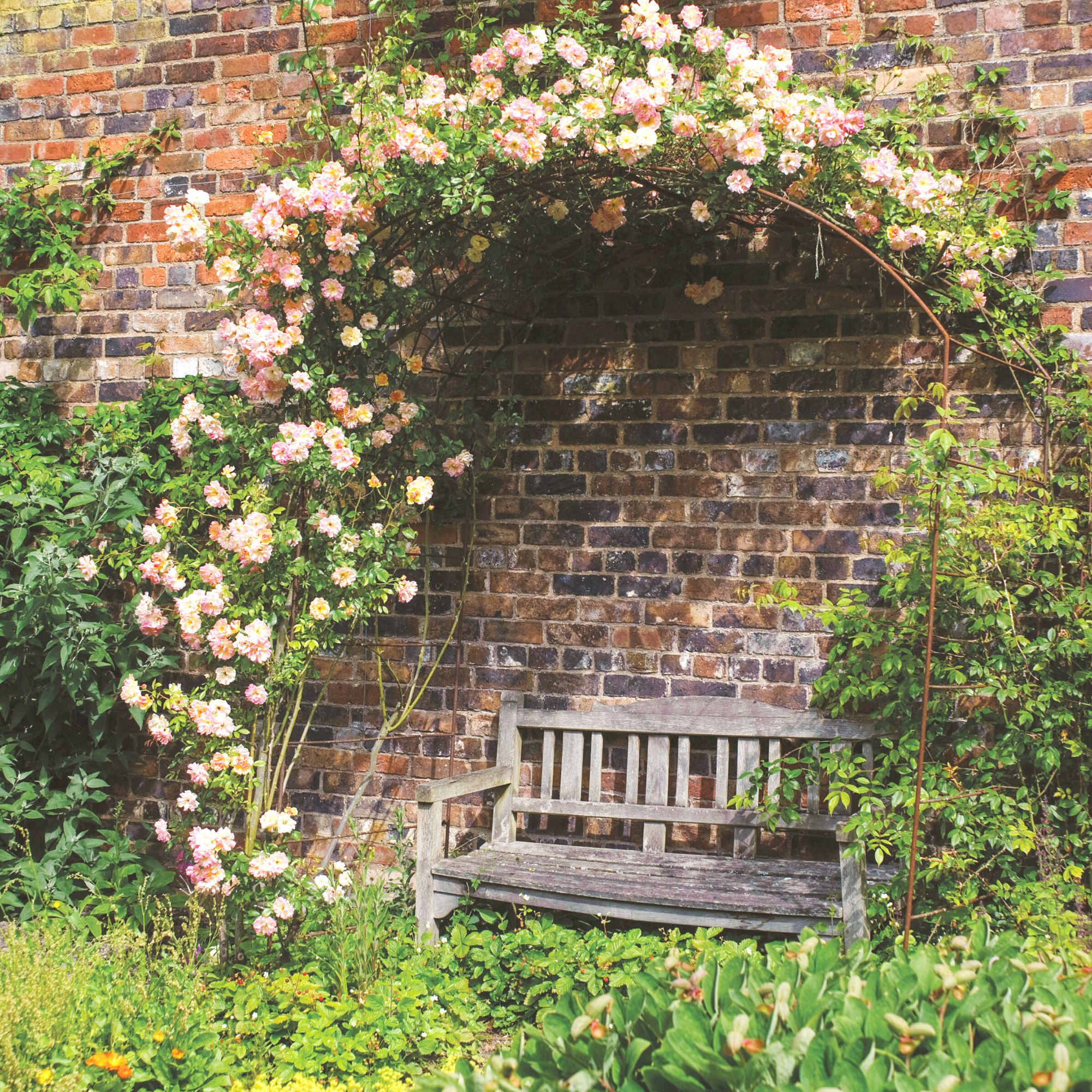
To add some height to your zen garden ideas, an archway provides a focal point for the garden. An arch is a clever way to frame plants, flowers or a water feature and should remain simple to blend in with the rest of the serene nature of the garden.
In classic Japanese gardens, Torii gates are a common feature. They mark the divide between the normal daily zone and the place of worship you are about to enter.
The freestanding arch is commonly made of metal, wood or stone and should echo the simplicity of this type of garden. Most Torii archways are painted red because it is believed that the colour wards off evil spirits.
9. Soften the look with ferns
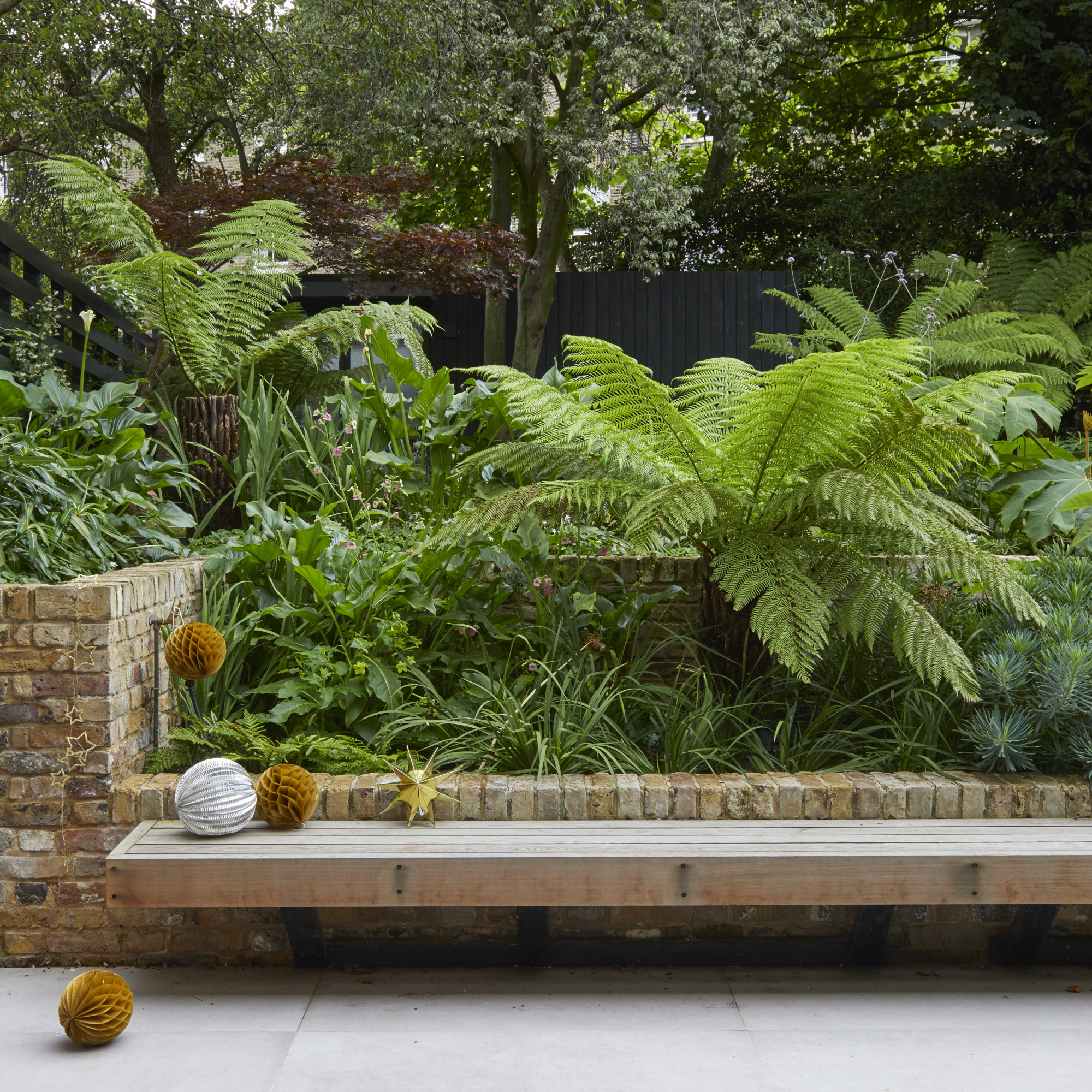
Adding ferns to your garden is a great way to soften the stones and rocks that are part of your zen garden ideas. Slow-growing evergreen ferns are the best types, including hart’s-tongue ferns and wood ferns.
Mix the ferns with moss and bamboo to fill out any sparse areas. Within your garden landscaping ideas, a mix of these plants will provide shade to the garden and can provide a privacy screen to zone off the garden. Buddha belly bamboo, and black bamboo work well and mixing moss in between rocks creates a soft look that blends your elements.
'Bamboo can be used as a backdrop, which will gently sway in the wind causing the stems to knock together gently like a natural wind chime,’ says Mark Lane, gardening expert and BBC Gardeners’ World presenter.
10. Mix up the colour and size of your rocks
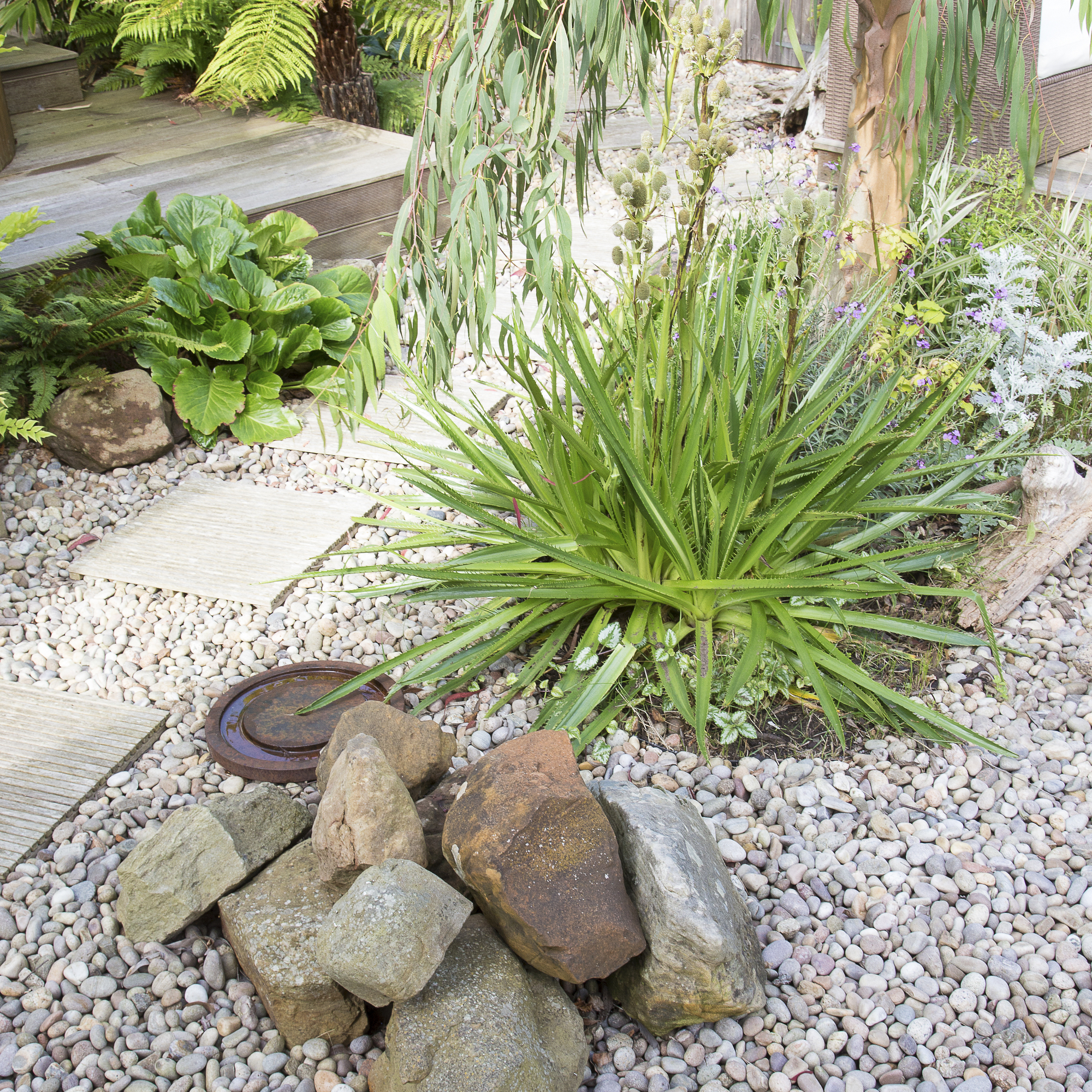
The rocks and stones within your zen garden ideas are there to mimic mountains, waterfalls and islands as part of a larger calming landscape.
‘Rocks are a must when it comes to zen gardens,' says Anna Elkington, home and garden expert at Melody Maison. 'In traditional zen designs, rocks represent large mountains. They provide an easy and minimalist centrepiece in any garden.'
Mimic the natural landscape as much as possible by varying the stones and rocks you use for a naturalistic effect. This symbolism adds a sculptural element to the garden and the rocks can be used as part of your garden edging ideas, too.
11. Create soft lighting

‘Adding lanterns around your garden is a common feature in zen gardens,' says Anna Elkington from Melody Maison. 'Other than creating light around pathways, they add a calming atmosphere on long summer evenings.'
The aim isn't to mimic daylight with these garden lighting ideas – you'll want to achieve a subtle and harmonious effect with your lighting that feels part of the environment and doesn’t overpower it.
‘The ideal lighting for a zen garden should be soft and subdued,' says Mara Rypacek Mille, managing director at Industville Ltd. 'Lighting can be used to balance different elements in the space, such as plants, furniture and artwork. Hanging pendant lights or wall-mounted sconces are great choices to provide subtle illumination, while also introducing an element of visual interest.
'Incorporating warm low-level lighting can also help to make the space feel more peaceful and inviting, plus soft accent lighting is perfect for highlighting features such as small water features or terrariums.’
12. Use natural materials
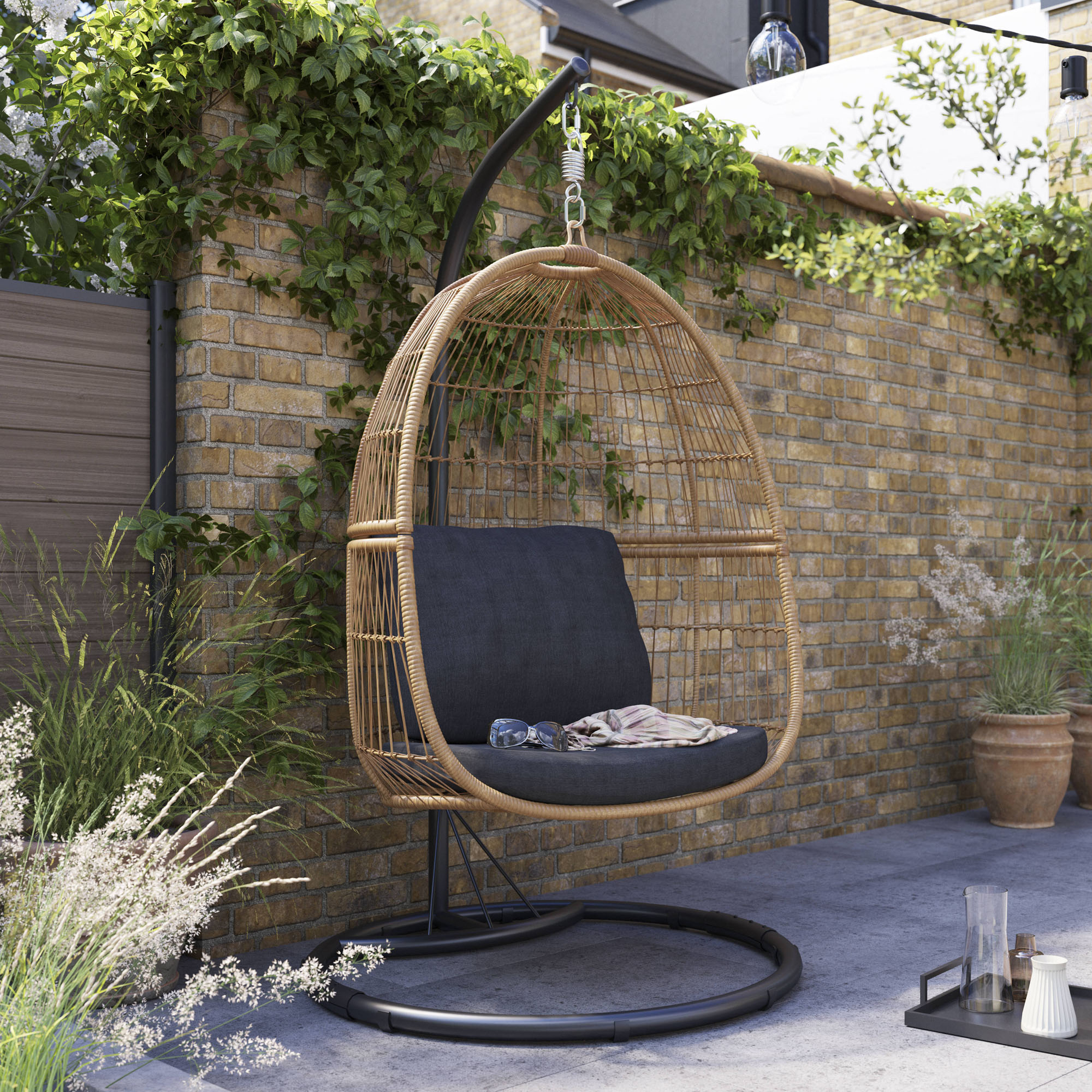
Zen gardens are traditionally created with natural materials. 'Move away from harsh metals and introduce organic-feeling furniture pieces that play with the idea of gentle texture, such as those with woven rope-style frames,' say the experts at Atkin and Thyme. 'Keep your palette pared back with sand or stone-coloured cushions and throws.'
An egg chair such as the Gradenline large hanging egg chair, £344.99, Aldi, created out of rattan or wicker, is a simple neutral colour that would work perfectly in a zen garden. It's the perfect place to sit in quiet contemplation and enjoy the serenity of the garden. Selecting natural materials for your best garden furniture will blend harmoniously with the rest of the garden. Rustic accents work best in a zen garden in comparison with modern details, which would create too harsh a contrast.
13. Include a zig-zag bridge

Japanese legend says that to ward off evil spirits, a garden should have a zig-zag bridge. The myth goes that evil spirits can only travel in a straight line, so a zig-zag bridge will trap any bad spirits and keep them at bay.
The myth aside, this feature requires a slow journey through the garden which follows the zen principles of mindfulness and a relaxed pace of life.
14. Make a zen zone
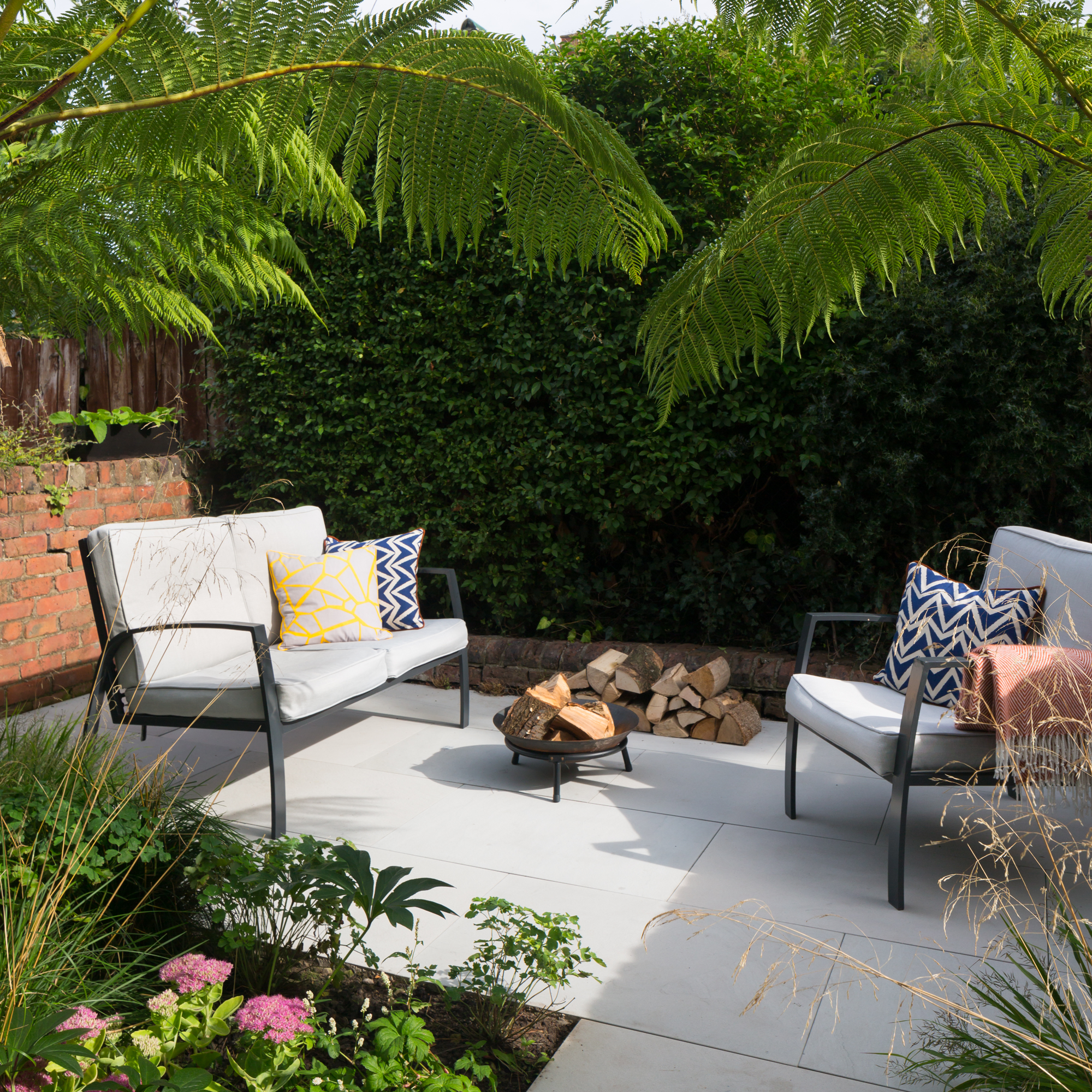
Dip your toe in by dedicating one corner of your plot to zen garden ideas.
'A lot of zen gardens are in small, enclosed spaces, so think about using a small area of your garden, perhaps the side access,' says Mark Lane. 'Introduce a path to lead you to a destination spot or introduce an area for sitting as you look out across a ‘river’ of gravel.'
15. Create a sense of seclusion
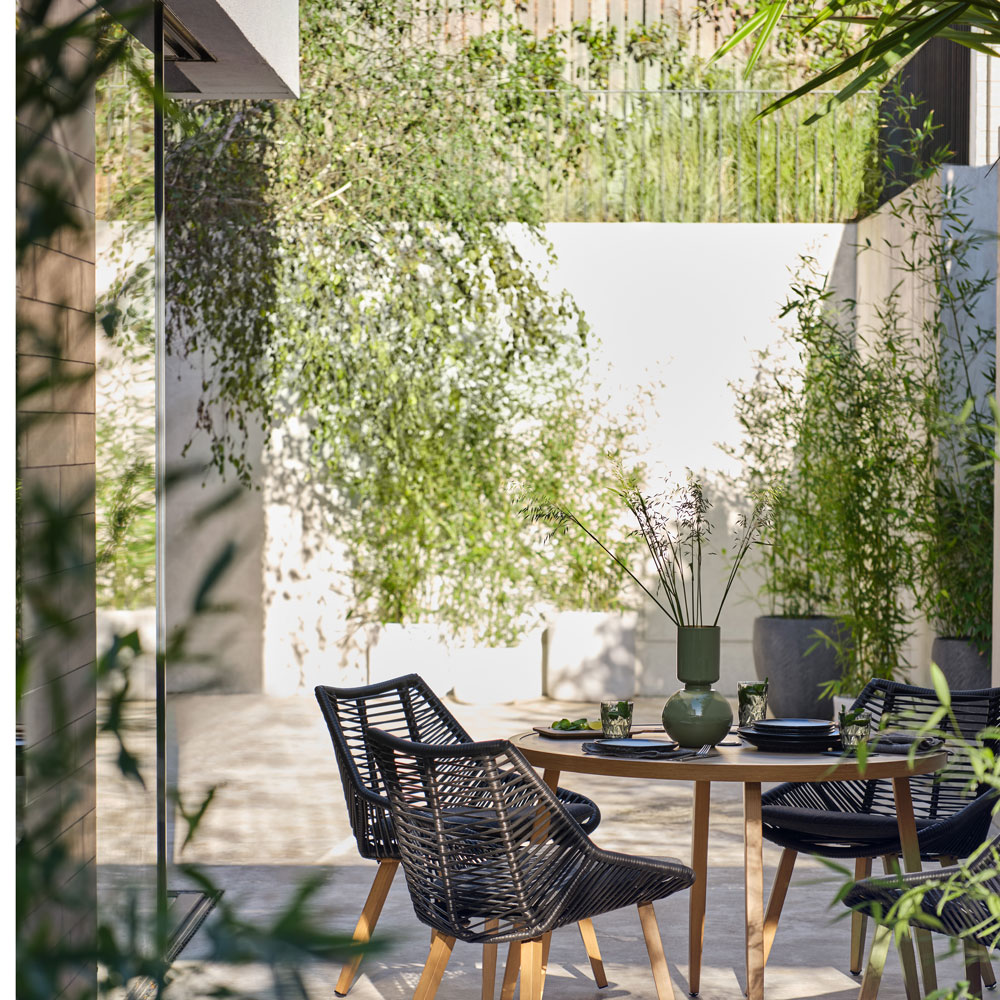
Traditionally, zen gardens are surrounded by walls and buildings. If you’re overlooked by neighbours or have a south-facing garden, there are permanent or temporary solutions you can try to give your garden more shade and privacy. For easy garden shade ideas, consider screening off the area with some carefully pruned shrubs and trees, or hard landscaping.
A simple timber trellis, panels, a pergola, or an umbrella would also work well. Alternatively, you could add architectural foliage to make your space feel more secluded. 'Plants such as bamboo (Arundinaria) can be used around to frame the outside edges of gardens or to add some extra privacy and create zones or areas within a space,' suggests Marcus Eyles from Dobbies.
Be careful when choosing where to grow bamboo, though. 'Don't plant bamboo in the ground,' advises garden designer Melanie Hick. 'Bamboo is an ideal plant for a zen garden, but it suckers and runs and can ruin paving. Plant bamboo in planters and pots for a lovely swishing sound.'
16. Stick to a pared-back colour palette

Keep your colour scheme simple, and lean towards cool tones. 'Choose plants with large grey/silver foliage, such as super soft Senecio ‘Angel Wings’ or Brachyglottis 'Sunshine' which produces bright yellow, daisy-like flowers in June and July,' says Marcus Eyles from Dobbies. Hardy evergreen ferns are a good option to keep your space looking green all year round.
The greenery is ideal for instantly restoring a sense of being surrounded by nature, whether that greenery is in abundance or merely a few pots. Mark Lane from Stannah agrees that green plays a big part in zen garden design, as keeping planting to a simple palette of greens can help to relax body and mind.
17. Create an area of raked gravel
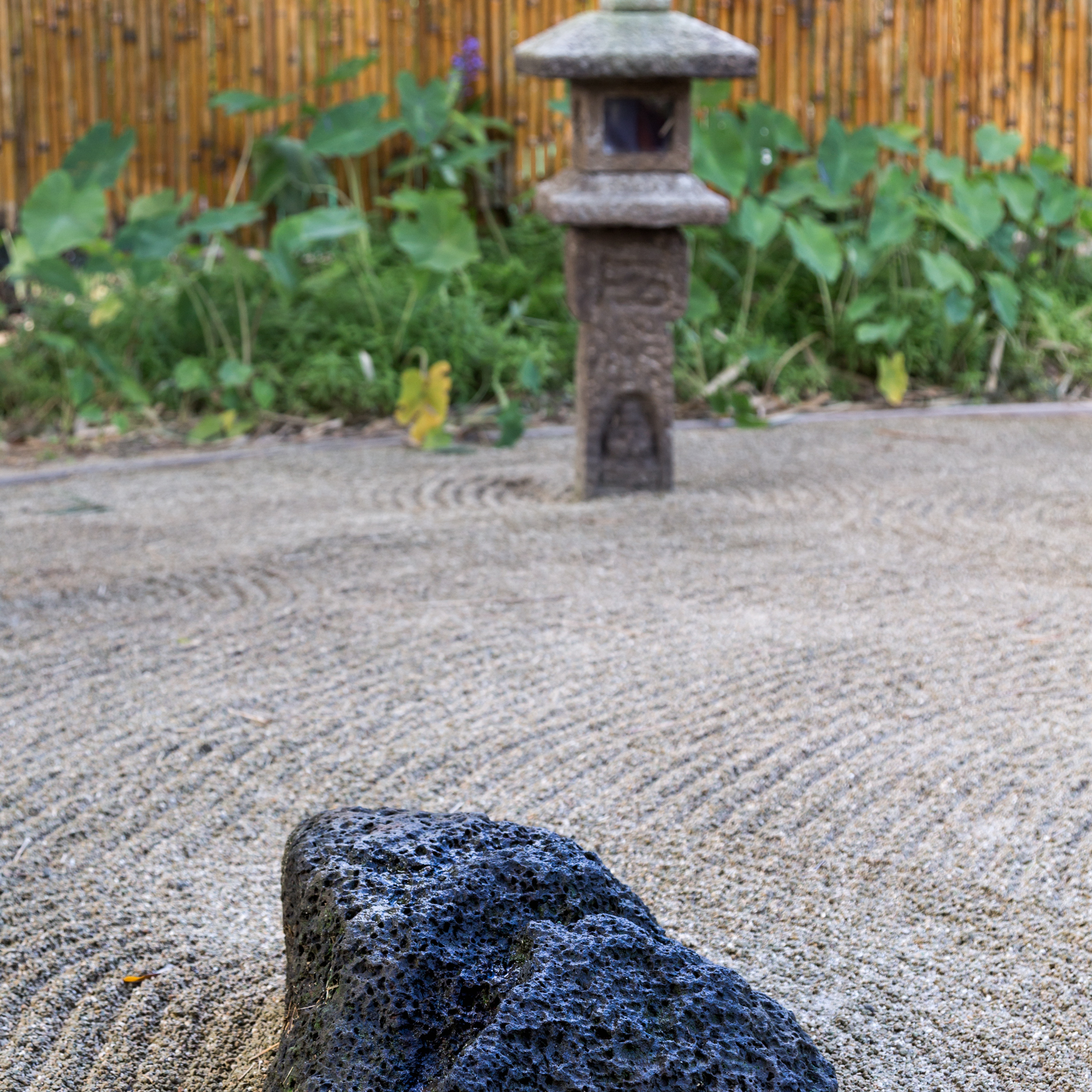
For a more traditional zen garden feel, see if your space would accommodate a small area of raked gravel. Gravel garden ideas are a well-known element of zen gardens and are designed to aid meditation as well as creating a striking feature that looks sophisticated and calming.
White gravel in particular looks great because it creates the illusion of water and is common in Karesansui, or dry landscape zen gardens.
18. Incorporate rocks as a sculptural element

Sculptures and statues can be good finishing touches to bring character and texture to an outdoor space as part of your garden art ideas. Keep things minimalistic and natural with rocks, either grouped together or carefully arranged throughout your garden.
They also provide a focal point for your garden which you can fan your other ideas around. To keep in feel with the zen atmosphere, choose a sculpture or statue in a neutral, natural material.
19. Plant ornamental grasses

The key to this garden look is in the simplicity. You're looking for planting that works wonders without feeling too 'done'. Create a sense of wilderness by planting grasses that don't feel too styled, yet offer a generous canopy of coverage.
'Try larger foliage types such as Miscanthus and Pampas grasses (Cortaderia) or, for ground cover, the blue Festuca glauca,' advises Marcus Eyles from Dobbies.
20. Encourage plants with healing qualities
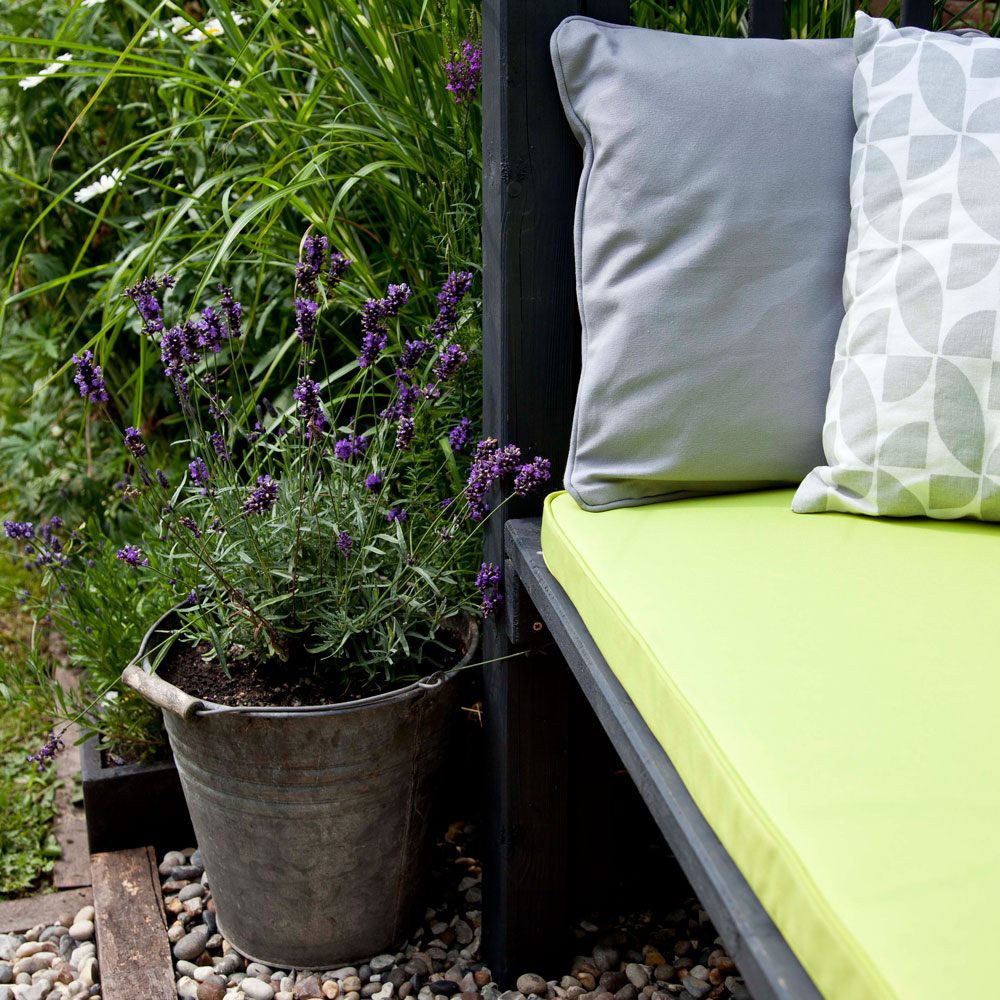
Surround yourself with plants and flowers to boost your sense of wellbeing. For a brilliant immersive garden path idea, plant aromatic herbs along the edge of the path so that the scent is released as you brush past. Just be sure to avoid these common herb garden mistakes.
Choose plants with healing properties for beds and borders such as echinacea, fennel or lemon balm, or try fragrant thyme and lavender.
21. Encourage wildlife

Being at one with nature is particularly grounding and therefore helps to set the tone for a zen garden scheme. Look to add flowering perennials to your planting for a winning wildlife garden idea.
'For attracting bees, butterflies and insects, use plants such as Echinacea, butterfly bush (Buddleja) and foxgloves (Digitalis),' advises Marcus Eyles from Dobbies. All of these flowering varieties add a pop of colour that's irresistible to insects.
22. Sit back and relax
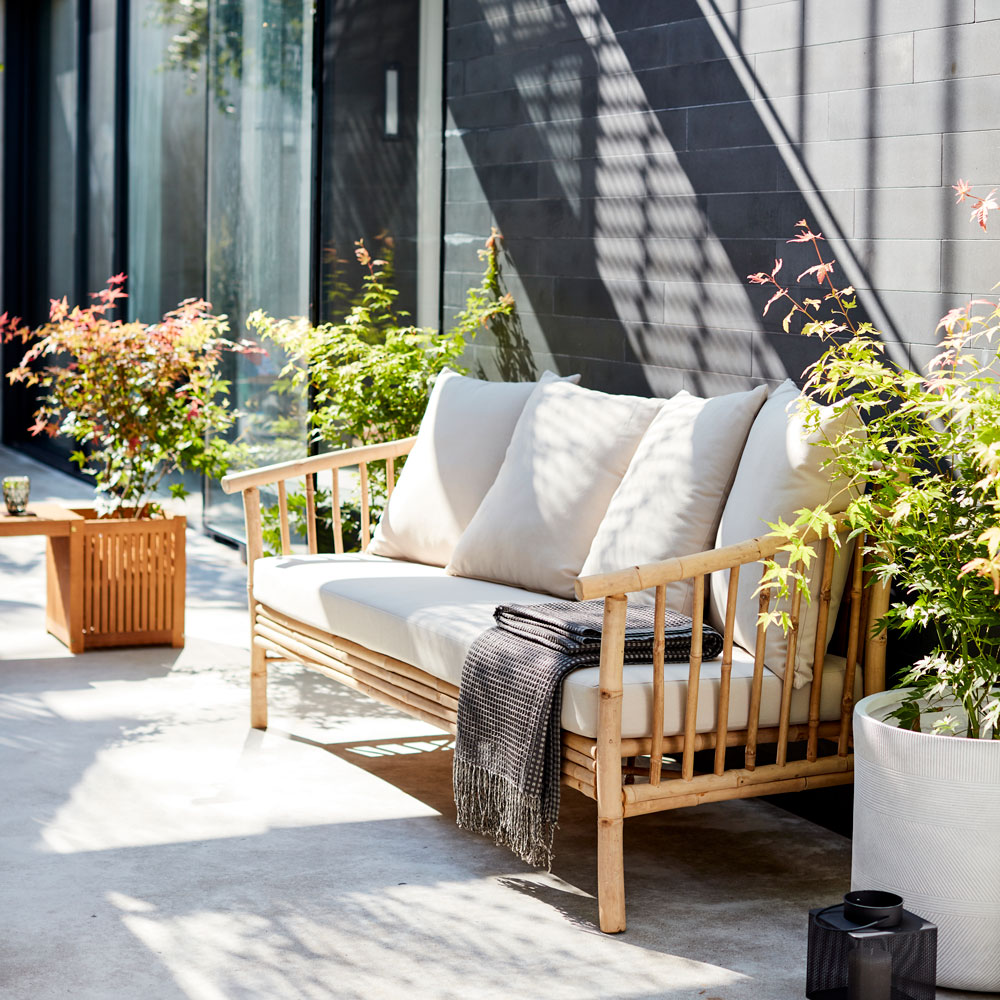
Of course, a feeling of zen comes when you're at your most restful, so you'll want to create an outdoor space where you can take it easy. The best garden furniture is the most comfortable solution, a must for a relaxing outdoor space. But think about who’s going to be using it before you buy.
Need a family-friendly space with plenty of seating? Then a sofa and armchair set-up or modular design that can be arranged to fit your space is worth considering.
Or, if you’re planning a quiet spot for two, then a double daybed or pod-style sofa may be a better fit.
Remember to future-proof furniture choices. Sofa-style seating can be hefty to move, so if you’re planning a permanent set-up, choose pieces designed to withstand the elements. Or, invest in protective covers.
23. Welcome water

The sound of running water is one of the most calming sounds and therefore any form of water feature or pond is a welcome idea for a zen garden. 'Remember water,' says Melanie Hick. 'Adding a water feature idea is an easy way to connect you to nature.
'Whether it's a container pond, a shop-bought bubbler or a water dish, water is a relaxing focal point and great for wildlife.'
For a more natural look, add rocks and plants around your water feature so it blends in with the rest of the garden.
24. Provide an area to meditate

Traditional zen gardens were designed to help monks meditate and reflect – and there's no reason why your garden can't offer a similarly peaceful place for our own meditation and wellbeing.
'A wide range of studies show that meditation can have positive effects for everyone,' says Melanie Hick. 'Make sure you create at least one small place to sit and reflect, perhaps surrounded by bamboo, with a view of your water feature.'
FAQs
What is the best plant for a zen garden?
There are countless possibilities when it comes to planting up your zen garden, so we asked garden designer Harriet Worsley for her top picks.
'One plant that I use for Japanese-inspired planting is Liriope muscari, a strappy tough evergreen that tolerates dry shade. In the same way that zen gardens play with the optical illusion of scale (is it a boulder or a piece of gravel?), Liriope looks like giant tufts of traditional grass seen on a lawn.
'Other favourites are Hakonechloa macra, which looks like a flowing waterfall foliage. It’s not evergreen but it's good for planting to swirl over rocks or around shrubs, and at the front of the border.
'Camellias work as focal points, and dwarf rhododendrons can be mass planted and clipped into shapes.'
What can I put in my zen garden?
Anna Elkington from Melody Maison says, ‘The main elements of a zen (Karesansui) garden include sand, stones, wood and very few plants, these gardens are known to represent nature. Using large upright rocks can symbolise islands and mountains that emerge from the water. As zen gardens incorporate a dry landscape, water is represented through gravel and sand. Wood is used in man-made elements such as bridges to symbolise the movement from one life to another, usually the afterlife.'
The sound of a water feature provides a soothing background noise which contributes to the zen nature. Winding paths and raked gravel are also found in zen gardens along with plants such as bamboo, ferns, moss and acer and bonsai trees.
Each zen garden looks different so feel free to have fun and experiment when creating your own oasis.
With so many zen garden ideas to choose from, there are endless ways to turn your outdoor space into a peaceful haven.
Tamara was Ideal Home's Digital Editor before joining the Woman & Home team in 2022. She has spent the last 15 years working with the style teams at Country Homes & Interiors and Ideal Home, both now at Future PLC. It’s with these award wining interiors teams that she's honed her skills and passion for shopping, styling and writing. Tamara is always ahead of the curve when it comes to interiors trends – and is great at seeking out designer dupes on the high street.
- Sophie KingGardens Editor
- Imani CottrellContent Editor


